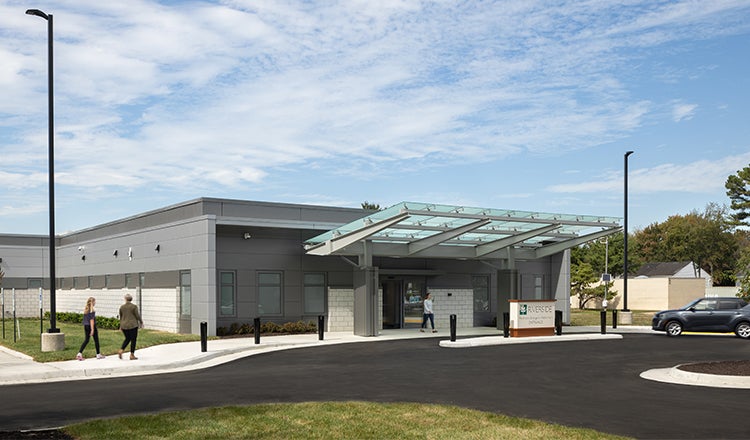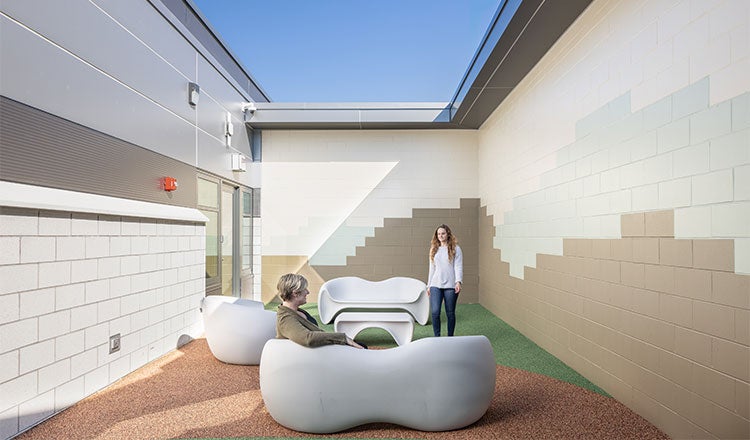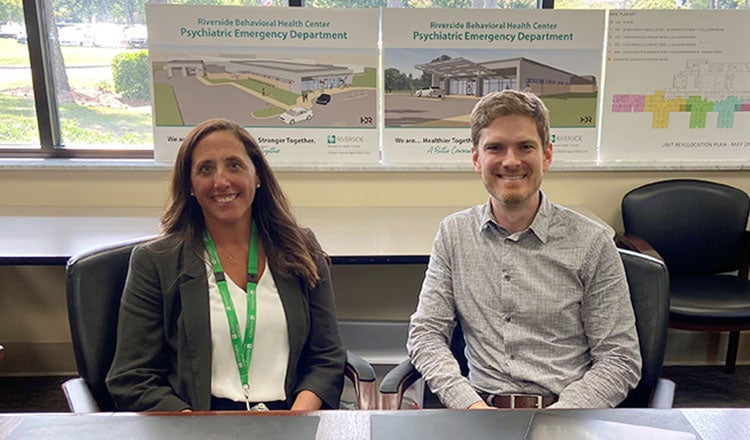
Listen, Mental Health Matters: Highlights From Our Conversation With RMHRC's Stacey Johnson
Improving the continuum of care for mental and behavioral health care is top of mind for all organizations caring for patients who require these services. Riverside Mental Health and Recovery Center is a first-of-its-kind psychiatric emergency department in Virginia. After working together to bring this vision to life, HDR Behavioral and Mental Health Practice Leader Brian Giebink sat down with Riverside Mental Health and Recovery Center President Stacey Johnson to talk about why this project is important to Riverside’s mission in their community.

Living Your Mission
Brian: Many organizations have a key moment that defines who they’ve become and why they do what they do. Was there a moment that shaped Riverside into the organization that it is today?
Stacey: The Riverside mission is to care for others as you would care for those you love. When we use that [motto] to guide what we’re doing as an organization, it’s always going to lead us down the right path. It defines Riverside and the opportunity to care for mental health and addiction patients. While the mission was established long before my time at Riverside, it’s something we continue to live for today. If you ask any of our team members, they can all repeat that. It’s amazing to be a part of an organization that culturally believes in its mission.

Knowing What Your Patients Need Most
Brian: You’re about to open a new psychiatric emergency department that’s attached to your existing center. What was the impetus behind putting all this energy into psychiatric emergency care?
Stacey: When we evaluated what was happening in our medical emergency departments, it became clear that we had patients spending extensive amounts of time medical emergency rooms and not receiving the care they needed the most. That’s certainly not unique to us, it’s really a global problem; we made the decision to tackle it. Considering patients’ lived experiences and examining the data, we decided to create a space for patients where they can experience the continuum of care by receiving it in one location and always having a place that they can call home. That’s really the premise – getting patients started at the right place and having behavioral and mental health experts there to provide that care around the clock is critical.
Solving the Challenges through Collaboration
Brian: What roadblocks do you typically face and how are you able to pivot to move behavioral health initiatives forward? Specifically with the psychiatric emergency department, I know there were several challenges due to its inaugural status in the state – what were those challenges in getting it up and running?
Stacey: The challenges that we have in mental health care here at Riverside are very similar to what others face globally. Healthcare profit margins are very small, and behavioral healthcare profit margins are even smaller. Being able to open a psychiatric emergency department requires an organizational commitment, which we were lucky to have. I think Virginia is making strides to improve, whether that be reimbursement, startup costs, etc., and there are many initiatives to aid with those factors, so we hope improvement is down the line. Truthfully, there were a lot of roadblocks. Being the first of your kind in a state is amazing and exciting, but also means that you don’t have appropriate regulatory bodies set up that pertain to this type of care specifically. What laws do you need to consider? What’s the standard of care? There aren’t really standards of care if there aren’t similar facilities in your area. When we learned about these models, we had to go to other states and learn from them, so a tremendous amount of research into best practices was required and we received ample help from legal counsel on guidelines and how to align practices that match our medical emergency departments. These were huge opportunities for us to consider integration of services within our health system, whether it be a transport or a transfer and really understanding what that means for us.

Partnering On A Shared Vision
Brian: The new ED is a big investment for your health system. How did you get everyone on the same page and aligned with this new approach?
Stacey: When we constructed this model, we built it on strict numbers of patients that were in our medical emergency departments and the minutes that they were there — the true volumes. When you look at the cost of a long stay patient in a medical emergency department, that does drive cost up. We spent time considering the best setting for that kind of patient and how it’s part of our mission. We’ve also been lucky to build partnerships with the city of Newport News as well as the city of Hampton. The city of Hampton has designated some ARPA funds for some of the startup costs for our psychiatric emergency department, whereas Newport News dedicated funds to the development of our outpatient services because as we know, no single part of behavioral healthcare can be successful independently. We were extremely fortunate to receive those grants. It’s also important to mention the Department of Behavioral Health, who we partnered with to develop our detox and addiction outpatient services. We’re eager to see what budget gets approved and what opportunities await.




